
Amiens: A Hidden Gem in Northern France
Discover Amiens, a city of gothic wonders, literary legends, and floating gardens, nestled in the heart of France's picturesque Picardy region.
Nestled in the heart of the Picardy region, Amiens is a city brimming with history, charm, and architectural beauty. Known for its stunning Gothic cathedral, Notre-Dame d'Amiens, this UNESCO World Heritage site is the largest of its kind in France and a marvel of medieval engineering. Its soaring towers and intricate façade will leave you in awe, while the serene interior offers a peaceful respite from the bustling city outside. For lovers of literature, Amiens holds a special place as the home of Jules Verne, the celebrated author of classics like 'Twenty Thousand Leagues Under the Sea' and 'Around the World in Eighty Days.' A visit to the Maison de Jules Verne provides a fascinating glimpse into the life and imagination of this visionary writer. The house is filled with personal artifacts, original manuscripts, and whimsical details that bring his stories to life. But Amiens isn't just about its past. The city boasts a vibrant cultural scene, with numerous museums, galleries, and theaters. The Hortillonnages, or floating gardens, offer a unique way to explore the city's natural beauty. These picturesque gardens are best enjoyed by boat, as you glide through a maze of canals surrounded by lush greenery and colorful flowers. The Saint-Leu district, with its charming canalside bars and restaurants, is perfect for an evening stroll or a relaxed meal by the water. Amiens is also a gateway to the surrounding countryside, where you can discover the rich history and natural splendor of the Somme region. From World War I battlefields to tranquil nature reserves, there is something for everyone to enjoy. Whether you're a history buff, a nature lover, or simply looking for a peaceful retreat, Amiens offers a perfect blend of old-world charm and modern attractions.
Local tips in Amiens
- Visit the Notre-Dame d'Amiens Cathedral early in the morning to avoid crowds and enjoy the peace.
- Take a boat tour through the Hortillonnages for a unique perspective of the city's floating gardens.
- Explore the Saint-Leu district in the evening for a lively atmosphere and great dining options.
- Check out the Maison de Jules Verne for an immersive experience into the world of the famous author.
- Plan a day trip to the nearby Somme battlefields for a sobering yet enriching historical experience.
Neighbourhoods in Amiens
Amiens: A Hidden Gem in Northern France
Nestled in the heart of the Picardy region, Amiens is a city brimming with history, charm, and architectural beauty. Known for its stunning Gothic cathedral, Notre-Dame d'Amiens, this UNESCO World Heritage site is the largest of its kind in France and a marvel of medieval engineering. Its soaring towers and intricate façade will leave you in awe, while the serene interior offers a peaceful respite from the bustling city outside. For lovers of literature, Amiens holds a special place as the home of Jules Verne, the celebrated author of classics like 'Twenty Thousand Leagues Under the Sea' and 'Around the World in Eighty Days.' A visit to the Maison de Jules Verne provides a fascinating glimpse into the life and imagination of this visionary writer. The house is filled with personal artifacts, original manuscripts, and whimsical details that bring his stories to life. But Amiens isn't just about its past. The city boasts a vibrant cultural scene, with numerous museums, galleries, and theaters. The Hortillonnages, or floating gardens, offer a unique way to explore the city's natural beauty. These picturesque gardens are best enjoyed by boat, as you glide through a maze of canals surrounded by lush greenery and colorful flowers. The Saint-Leu district, with its charming canalside bars and restaurants, is perfect for an evening stroll or a relaxed meal by the water. Amiens is also a gateway to the surrounding countryside, where you can discover the rich history and natural splendor of the Somme region. From World War I battlefields to tranquil nature reserves, there is something for everyone to enjoy. Whether you're a history buff, a nature lover, or simply looking for a peaceful retreat, Amiens offers a perfect blend of old-world charm and modern attractions.
When is the best time to go to Amiens?
Iconic landmarks you can’t miss
Cathédrale Notre-Dame d'Amiens
Discover the awe-inspiring Cathédrale Notre-Dame d'Amiens, France's largest cathedral and a UNESCO Heritage site, showcasing stunning Gothic architecture.

St. Pierre Park
Experience the tranquil beauty of St. Pierre Park, a lush urban oasis in Amiens perfect for relaxation and outdoor activities.

Les Hortillonnages : visites guidées en barque à cornet traditionnelle
Discover the tranquil floating gardens of Les Hortillonnages in Amiens, a unique natural oasis perfect for relaxation and exploration.

Jules Verne House
Discover the enchanting Jules Verne House in Amiens, a must-visit museum celebrating the ingenious literary genius of adventure tales.

The caves of Naours
Discover the Caves of Naours, an underground marvel steeped in history, offering an unforgettable glimpse into a unique subterranean world.

Samara Arboretum
Experience the enchanting blend of nature and history at Samara Arboretum, a unique destination in La Chaussée-Tirancourt, France.

Musée De Picardie
Explore the rich artistic heritage at Musée De Picardie, an iconic art museum in Amiens featuring extensive collections and stunning architecture.

Australian National Memorial
Explore the significant Australian National Memorial in Fouilloy, France, a heartfelt tribute to the bravery and sacrifice of Australian soldiers in WWI.

Jardin des Plantes
Explore the Jardin des Plantes in Amiens, a stunning botanical garden filled with diverse flora, scenic pathways, and family-friendly experiences.

Beffroi d'Amiens
Discover the Beffroi d'Amiens, a UNESCO World Heritage site and a stunning symbol of history and culture in the heart of Amiens.

Parc de l'Evêché
Experience the serene beauty of Parc de l'Évêché in Amiens, a city park rich in history and culture, perfect for relaxation and exploration.

Amiens Railway Station
Discover the charm of Amiens Railway Station, your gateway to exploring the enchanting Hauts-de-France region in northern France.

Office Amiens Métropole Tourist
Explore the beauty of Amiens and the Picardy region at the Office Amiens Métropole Tourist, your essential travel resource in France.

Tombe de Jules Verne
Explore the serene resting place of Jules Verne in Amiens, a historical landmark steeped in literary heritage and tranquil beauty.

Saint-Leu Catholic Church at Amiens
Explore the artistic and spiritual beauty of Saint-Leu Catholic Church in Amiens, a Gothic masterpiece that enchants visitors with its tranquility and history.

Unmissable attractions to see
Cathédrale Notre-Dame d'Amiens
Explore the grandeur of Cathédrale Notre-Dame d'Amiens, the largest Gothic cathedral in France, rich in history and architectural beauty.

Zoo Amiens Métropole
Explore the enchanting Zoo Amiens Métropole, a family-friendly wildlife park showcasing diverse species and promoting conservation efforts.
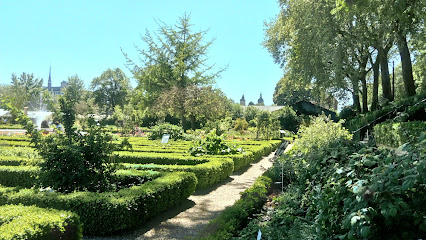
Jules Verne House
Explore the life and legacy of Jules Verne at his charming house museum in Amiens, where literature and history come alive in an enchanting setting.

The caves of Naours
Discover the breathtaking underground world of the Caves of Naours, a historical gem in the heart of France's Picardy region, rich in stories and natural beauty.

Samara Arboretum
Explore the enchanting Samara Arboretum in La Chaussée-Tirancourt, a perfect blend of nature and history with stunning gardens and archaeological treasures.

Somme 1916 Museum
Explore the echoes of history at the Somme 1916 Museum, a key site for understanding the impact of World War I in France.
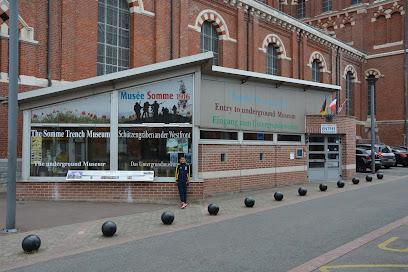
Beaumont-Hamel Newfoundland Memorial
Explore Beaumont-Hamel Newfoundland Memorial, a serene tribute to bravery and sacrifice in World War I, offering rich historical insights and reflection.
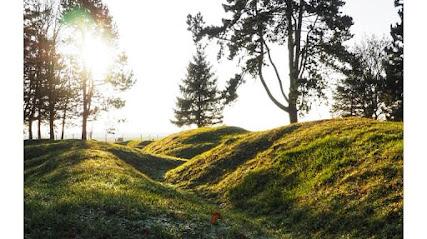
Museum of the Great War
Discover the Museum of the Great War in Péronne, a profound tribute to World War I featuring immersive exhibits and rich historical narratives.

Château fort de Rambures
Experience the charm and history of Château Fort de Rambures, a stunning medieval castle nestled in the heart of the Picardie region.

Parc de la Hotoie
Discover the serene beauty of Parc de la Hotoie in Amiens, a lush city park perfect for relaxation, picnics, and enjoying nature in the heart of France.

Musée De Picardie
Explore the rich artistic heritage at Musée De Picardie, a premier art museum in Amiens showcasing diverse collections and exhibitions.

Lochnagar Crater WW1
Explore the haunting beauty of Lochnagar Crater, a significant WWI memorial in France, and reflect on the sacrifices of brave soldiers.

Historial de la Grande Guerre - Musée de Thiepval
Explore the profound narratives of World War I at the Historial de la Grande Guerre in Thiepval, France – a must-visit museum for history enthusiasts.

Jardin des Plantes
Explore the enchanting Jardin des Plantes in Amiens, a stunning botanical garden offering lush landscapes and vibrant flora for a peaceful retreat.

From Grand Marais Park
Experience the serene beauty of Grand Marais Park in Amiens, a perfect blend of nature and urban charm, ideal for relaxation and outdoor activities.

Essential places to dine
Le Quai
Experience authentic French cuisine at Le Quai in Amiens – where tradition meets taste by the riverside.

Au Bureau
Experience the vibrant culinary scene at Au Bureau in Amiens—where French flavors meet lively pub culture.

Restaurant Le Comptoir du Malt Amiens Sud
Experience authentic French cuisine and craft brews at Restaurant Le Comptoir du Malt in Amiens Sud - a family-friendly culinary delight.
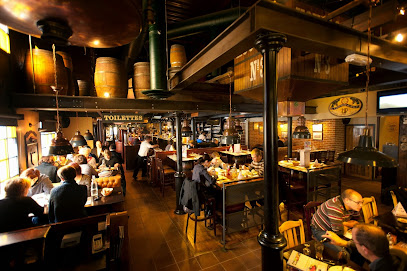
Steak Easy Américan Food
Savor the taste of America at Steak Easy American Food in Amiens - your go-to destination for delicious steaks and gourmet burgers.

Ô Jardin
Experience the best of French cuisine at Ô Jardin in Amiens—where fresh ingredients meet serene garden views for an unforgettable dining experience.

Brasserie de l'horloge
Experience the essence of French cuisine at Brasserie de l'Horloge in Amiens - where tradition meets taste in every dish.

La Dolce Vita
Savor authentic Italian flavors at La Dolce Vita in Amiens – where every meal feels like a celebration.
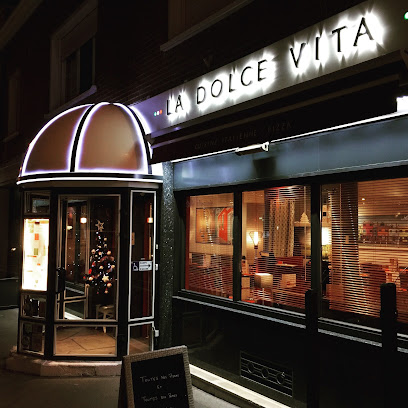
Les Bouchées Doubles
Discover exquisite French cuisine at Les Bouchées Doubles in Amiens - where every meal is a celebration of flavor and tradition.
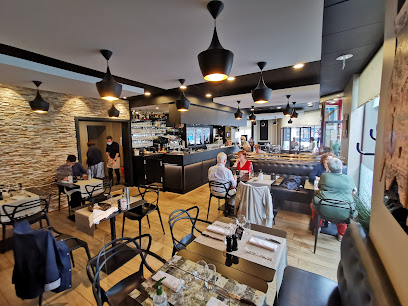
Ad Hoc Cafe
Experience the best of French cuisine at Ad Hoc Cafe in Amiens - your go-to destination for brunches and artisanal coffee.

Crêperie La Mangeoire Amiens Centre
Experience authentic French crêpes at Crêperie La Mangeoire in Amiens Centre – where tradition meets taste.

La Brasserie Jules
Discover La Brasserie Jules in Amiens - where exquisite French cuisine meets fresh seafood in a charming brewery setting.

Le Lobby - Les Marissons
Experience exquisite French dining at Le Lobby - Les Marissons in Amiens, where culinary artistry meets warm hospitality.

Le Dos D'Âne
Experience authentic French cuisine at Le Dos D'Âne in Amiens – where traditional crepes meet modern culinary artistry.

Restaurant Le 31
Discover the exquisite flavors of traditional French cuisine at Restaurant Le 31 in Amiens - a culinary haven for food lovers.

Le T'Chiot Zinc
Experience authentic French cuisine at Le T'Chiot Zinc in Amiens - where tradition meets taste in a cozy setting.

Markets, malls and hidden boutiques
Shopping Promenade Coeur Picardie
Shop, dine, and unwind at Coeur Picardie, Amiens' premier shopping destination offering a variety of stores and restaurants for every taste.

Galeries Lafayette Amiens
Explore Galeries Lafayette Amiens for an unforgettable shopping experience filled with fashion, beauty, and French elegance.

Hema
Discover Hema in Amiens - your go-to destination for unique gifts, stylish homeware, and delightful baby essentials in a vibrant shopping atmosphere.

Boutique Orange - Amiens
Explore cutting-edge technology and reliable service at Boutique Orange in Amiens - your destination for mobile and internet solutions.

Flying Tiger Copenhagen Amiens
Explore the creative and colorful world of Flying Tiger Copenhagen in Amiens, where fun meets affordability in a unique gift shopping experience.
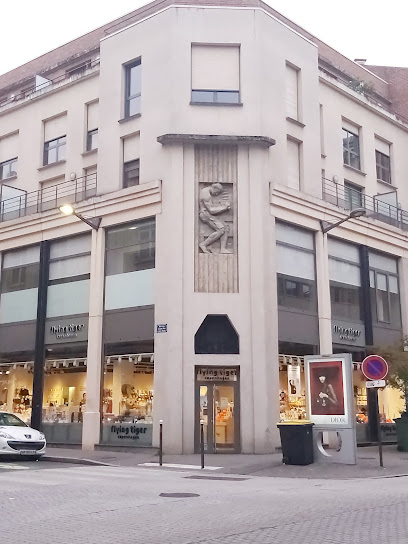
LUSH Cosmetics Amiens
Discover the enchanting world of LUSH Cosmetics in Amiens, where handmade beauty meets sustainability and creativity.

Pretty Wire Amiens
Discover unique fashion treasures at Pretty Wire Amiens, a local clothing store blending contemporary style with the essence of French culture.

Undiz
Discover trendy lingerie, swimwear, and accessories at Undiz in Amiens, where style and comfort come together for the modern shopper.

Levi's® Amiens
Discover quality denim and fashionable clothing at Levi's® Amiens, your go-to spot for style and comfort in the heart of France.

Skyclub Vintage
Explore timeless fashion at Skyclub Vintage in Amiens, where every piece tells a story and style is a journey through the past.

PIMKIE
Explore the latest women's fashion trends at PIMKIE, a stylish boutique in Amiens offering chic clothing and accessories for every occasion.

Promod
Explore the latest trends and chic apparel at Promod, a must-visit clothing store in the heart of Amiens, France.

Coffea, boutique de café et de thé à Amiens
Discover Coffea in Amiens, a delightful coffee store offering exquisite brews, artisanal teas, and a cozy ambiance for every visitor.

Maison 123
Explore Maison 123, a chic boutique in Amiens, offering stylish women's clothing that reflects modern trends and timeless elegance.

Louis Pion Amiens
Explore Louis Pion Amiens, your go-to destination for exquisite watches and jewelry in the heart of Amiens, perfect for memorable gifts.

Essential bars & hidden hideouts
Tower's Pub
Discover the lively atmosphere of Tower's Pub in Amiens, where traditional Irish charm meets delicious food and drinks in a welcoming setting.

Delirium Café
Discover the vibrant nightlife of Amiens at Delirium Café, a bar renowned for its extensive beer selection and welcoming atmosphere.

Baobar
Discover the lively Baobar in Amiens, where delicious food meets a vibrant atmosphere, perfect for an unforgettable night out.

Network Bar
Experience the lively atmosphere and exceptional drinks at Network Bar, a must-visit spot for tourists in Amiens.

My Goodness
Discover My Goodness in Amiens - a vibrant bar offering a delightful atmosphere and an extensive drink menu perfect for unwinding after a day of exploration.
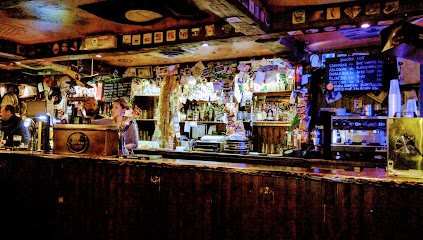
Le Rétro
Experience the best of local flavors and hospitality at Le Rétro, a charming bar and brasserie in the heart of Amiens, France.

English Pub
Experience the warmth and charm of the English Pub in Amiens, where delightful food and a wide selection of drinks await every visitor.

The 9 3/4
Discover The 9 3/4 in Amiens – a unique bar and café blending whimsical charm with local flavors for an unforgettable experience.

Couleur Café - Bar à Cocktails Rhumerie Saint Leu Amiens
Discover the vibrant Couleur Café in Saint Leu, Amiens - a cocktail bar where local flavors and creativity blend for an unforgettable night out.

L'hexagone Amiens
Explore the exquisite flavors and warm ambiance of L'hexagone Amiens, a premier wine bar offering a delightful taste of French culture.

Les Dés Raisonnables
Discover the charm of Les Dés Raisonnables, a cozy bar in Amiens offering a delightful drink selection and a welcoming atmosphere for all.

Le Living
Experience the lively atmosphere and diverse drink selection at Le Living, Amiens' premier bar for tourists and locals alike.

Le Nelson
Experience elegance and tranquility at Le Nelson, a premier lounge in Amiens, offering exquisite cocktails and stunning waterfront views.

Le Red&White
Discover the vibrant nightlife at Le Red&White, Amiens' premier gay bar offering creative cocktails and a lively atmosphere.

O Paradise
Experience a vibrant blend of halal cuisine, exotic cocktails, and shisha at O Paradise, the must-visit restaurant in Amiens.

Local Phrases
-
- HelloBonjour
[bon-zhoor] - GoodbyeAu revoir
[oh ruh-vwahr] - YesOui
[wee] - NoNon
[noh] - Please/You're welcomeS'il vous plaît / De rien
[seel voo pleh / duh ryen] - Thank youMerci
[mehr-see] - Excuse me/SorryExcusez-moi / Désolé
[ehk-skyu-zay mwa / day-zoh-lay] - How are you?Comment ça va ?
[koh-moh sah vah] - Fine. And you?Bien. Et vous ?
[byen. ay voo] - Do you speak English?Parlez-vous anglais ?
[par-lay voo ahn-glay] - I don't understandJe ne comprends pas
[zhuh nuh kohm-prohnd pah]
- HelloBonjour
-
- I'd like to see the menu, pleaseJe voudrais voir la carte, s'il vous plaît
[zhuh voo-dray vwahr lah kart, seel voo pleh] - I don't eat meatJe ne mange pas de viande
[zhuh nuh mahnzh pah duh vyand] - Cheers!Santé !
[sahn-tay] - I would like to pay, pleaseJe voudrais payer, s'il vous plaît
[zhuh voo-dray pay-ay, seel voo pleh]
- I'd like to see the menu, pleaseJe voudrais voir la carte, s'il vous plaît
-
- Help!Au secours !
[oh suh-koor] - Go away!Allez-vous en !
[ah-lay voo zahn] - Call the Police!Appelez la police !
[ah-puh-lay lah poh-lees] - Call a doctor!Appelez un médecin !
[ah-puh-lay uh may-duh-sahn] - I'm lostJe suis perdu
[zhuh swee pair-doo] - I'm illJe suis malade
[zhuh swee mah-lahd]
- Help!Au secours !
-
- I'd like to buy...Je voudrais acheter...
[zhuh voo-dray ah-shet-ay] - I'm just lookingJe regarde juste
[zhuh ruh-gard zhust] - How much is it?Combien ça coûte ?
[kohm-byen sah koot] - That's too expensiveC'est trop cher
[say troh shair] - Can you lower the price?Pouvez-vous baisser le prix ?
[poo-vez voo bay-say luh pree]
- I'd like to buy...Je voudrais acheter...
-
- What time is it?Quelle heure est-il ?
[kell ur ay-teel] - It's one o'clockIl est une heure
[eel ay-tuhn ur] - Half past (10)Dix et demi
[dees ay duh-mee] - MorningMatin
[mah-tan] - AfternoonAprès-midi
[ah-pray mee-dee] - EveningSoir
[swar] - YesterdayHier
[yehr] - TodayAujourd'hui
[oh-zhoor-dwee] - TomorrowDemain
[duh-man] - 1Un
[uhn] - 2Deux
[duh] - 3Trois
[twah] - 4Quatre
[kah-truh] - 5Cinq
[sank] - 6Six
[sees] - 7Sept
[sept] - 8Huit
[weet] - 9Neuf
[nuff] - 10Dix
[dees]
- What time is it?Quelle heure est-il ?
-
- Where's a/the...?Où se trouve...?
[oo suh troov] - What's the address?Quelle est l'adresse ?
[kell ay la-dress] - Can you show me (on the map)?Pouvez-vous me montrer (sur la carte) ?
[poo-vez voo muh mohn-tray (surr lah kart)] - When's the next (bus)?Quand est le prochain (bus) ?
[kahn ay luh proh-shahn (boos)] - A ticket (to ....)Un billet (pour ....)
[uhn bee-yay (poor)]
- Where's a/the...?Où se trouve...?
History of Amiens
-
Amiens, originally known as Samarobriva, was founded during the Roman era. It served as an important settlement in the Roman province of Gallia Belgica. The city was a vital crossing point over the River Somme and became a hub for trade and military logistics.
-
During the medieval period, Amiens flourished as a center of commerce and culture. The construction of the Amiens Cathedral, one of the largest and most impressive Gothic cathedrals in France, began in 1220 and was completed in 1270. This architectural marvel is renowned for its intricate facade and stunning stained glass windows.
-
Amiens played a strategic role during the Hundred Years' War between England and France. The city was captured by the English in 1435 but was later recaptured by the French. In 1802, the Treaty of Amiens was signed between France and the United Kingdom, temporarily ending hostilities and bringing a brief period of peace during the Napoleonic Wars.
-
The 19th century saw significant industrial growth in Amiens, with the establishment of textile mills and other manufacturing industries. The city's economy diversified, leading to the construction of new infrastructure, including the railways and modern urban planning.
-
Amiens was a crucial location during World War I. The Battle of Amiens, fought in August 1918, was a turning point in the war, marking the beginning of the Allied offensive that ultimately led to the end of the conflict. The city's strategic railway hub made it a focal point for military operations.
-
After suffering extensive damage during both World Wars, Amiens underwent significant reconstruction. The city's historical landmarks were meticulously restored, and new urban developments were initiated. Today, Amiens is a vibrant cultural and economic center, blending its rich historical heritage with modern amenities.
-
Amiens is renowned for its 'hortillonnages,' or floating gardens, which are a unique feature of the city. These gardens, located on small islands in the marshlands, have been cultivated since medieval times. The annual Festival of Hortillonnages celebrates this tradition, highlighting the city's enduring connection to its natural landscape.
Amiens Essentials
-
Amiens is located in northern France, about 120 kilometers north of Paris. The nearest airport is Charles de Gaulle Airport in Paris. From there, you can take a direct train from Gare du Nord to Amiens, which takes approximately 1.5 hours. Alternatively, you can rent a car and drive to Amiens, which takes around 2 hours via the A1 and A29 highways.
-
Amiens has a well-developed public transportation system, including buses and a free shuttle service in the city center. The city is also very walkable, with many attractions within close proximity. Taxis are readily available, and bike rentals are a popular option for exploring the area. For regional travel, the train station in Amiens offers connections to other major cities in France.
-
The official currency in France is the Euro (EUR). Credit and debit cards are widely accepted in Amiens, including in hotels, restaurants, and shops. ATMs are easily accessible throughout the city. It's advisable to carry some cash for small purchases and in case you visit smaller establishments that may not accept cards.
-
Amiens is generally a safe city for tourists. However, like any urban area, it's wise to take standard precautions. Be cautious of pickpockets, especially in crowded areas like the train station and popular tourist spots. Avoid walking alone at night in poorly lit areas. The neighborhoods of Etouvie and Elbeuf can be less safe, particularly after dark, so exercise additional caution if visiting these areas.
-
In case of emergency, dial 112 for immediate assistance, which connects you to police, fire, and medical services. The local police station and several hospitals are available in Amiens. It's recommended to have travel insurance that covers medical emergencies. Pharmacies are widely available for minor health issues, and many pharmacists speak English.
-
Fashion: Do dress smart-casual when dining out or visiting landmarks. Avoid overly casual attire like flip-flops or gym clothes in such settings. Religion: Do respect local customs, especially in religious sites. Dress modestly, and avoid loud conversations inside. Public Transport: Do validate your ticket before boarding buses or trains. Don't eat or drink on public transportation. Greetings: Do greet people with a 'Bonjour' followed by a handshake. Don't use first names unless invited to. Eating & Drinking: Do try local dishes like 'ficelle picarde' and 'macarons d'Amiens'. Don't rush your meal; dining is a leisurely activity in France.
-
To experience Amiens like a local, visit the weekly markets such as the Les Halles market for fresh produce and local specialties. Take a stroll along the Saint-Leu district, known for its charming canals and colorful houses. Don't miss the chance to visit the Maison de Jules Verne, the famous author's former home. For a tranquil experience, take a boat ride through the Hortillonnages, floating gardens unique to Amiens.
Trending Landmark in Amiens
-
Cathédrale Notre-Dame d'Amiens
-
St. Pierre Park
-
Les Hortillonnages : visites guidées en barque à cornet traditionnelle
-
Jules Verne House
-
The caves of Naours
-
Samara Arboretum
-
Musée De Picardie
-
Australian National Memorial
-
Jardin des Plantes
-
Beffroi d'Amiens
-
Parc de l'Evêché
-
Amiens Railway Station
-
Office Amiens Métropole Tourist
-
Tombe de Jules Verne
-
Saint-Leu Catholic Church at Amiens
Nearby Cities to Amiens
-
Things To Do in Lille
-
Things To Do in Rouen
-
Things To Do in Tournai
-
Things To Do in Ypres
-
Things To Do in Paris
-
Things To Do in Versailles
-
Things To Do in Kortrijk
-
Things To Do in Mons
-
Things To Do in Nieuwpoort
-
Things To Do in Reims
-
Things To Do in Ostend-Bruges International Airport
-
Things To Do in Ostend
-
Things To Do in Bruges
-
Things To Do in De Haan
-
Things To Do in Ghent














